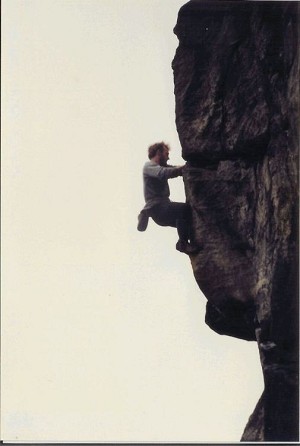
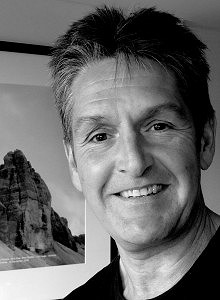
Today Mark or 'Rad' is a well-known and respected individual in the world of rock climbing with a sizeable catalogue of 'first ascents' to his credit. Mark embraces climbing in all its forms, but maintains that 'adventure lies at the heart and soul of the experience. Without risk climbing simply becomes a sport.' Dealing with danger develops human spirit, and in Mark's opinion, this is the magic that makes climbing uniquely special. Outside of climbing, Mark works as a specialist in the field of Leadership and Organisational Behaviour and through his own company Eclipse Management Development Ltd. He lives in the Yorkshire Dales and is married with three daughters.
Mark's book, A Canvas of Rock was published on 1st February 2012. He will also be giving a slide show and presenting his book, at Outside, Hathersage, next Thursday, 9th February. Details below.
Below we have an extract from Mark's book describing some of the bolt wars that took place on Yorkshire Limestone in the 1980's.
See Mark Radtke at the Hope Valley Adventure Film Festival
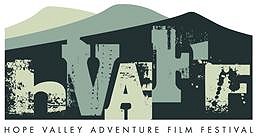
Sat 25th Feb. Hope Valley College, Peak District
HVAFF is a community based festival in the centre of the Peak, with 20 films, 3 lectures, food and beer.
From a climbers' perspective there's the chance to see a Best of ShAFF and a Best of Kendal film package in the same afternoon, followed by Mark Radtke's entertaining Canvas of Rock book readings and then finally the main evening lecture by ex Welsh Rugby International Richard Parks on his epic '7 Summits and both poles in 7 months' success.
For full schedule and on-line tickets go to www.hvaff.co.uk or visit Outside Hathersage for tickets.
Supercool: Duncan Drake versus Martin Atkinson by Mark Radtke
As sport climbing started to take root in the UK certain individuals held the view that some long established traditions were being violated. Such was the passion that on occasions conflicting views spilled over into open confrontation. In 1987 the ethics police were in action again in the form of the late Duncan Drake. Another version of the Kilnsey Frankie saga was unfolding, only this time the focus of the conflict was a route in Gordale called Supercool. Supercool was an aid climb originally created by lakes climbers Rick Graham and Andy Hyslop in 1980. The route had minimal fixed gear and the name gave an indication of the mental state required to climb it.
Martin Basher Atkinson had already made his mark in Gordale with free ascents of the neighbouring Hangman and Pierrepoint and in doing so had created two magnificent free routes. Atkinson's attention was now drawn to Supercool. This was a different kettle of fish however, unlike other aid routes hereabouts there was minimal fixed gear, or scope for good natural protection. Atkinson considered that the only feasible way of free climbing this wall would be to employ bolts as protection. Duncan had other ideas.
I remember one evening at West Vale, Duncan was in hyper mode and was ranting.
'I met Basher at Almscliffe on Tuesday, I went straight up to him and said what's all this about bolting Supercool, haven't you got any balls or what ?, he tried reasoning with me saying that there's no way that Supercool would go without bolts. I just said that he'd lost his bottle, but he insisted that he was as bold as anybody. So I said, come on then lets prove it. So I soloed Wall of Horrors. Come on Basher show me what you've got I said, but he wouldn't do it. So I soloed it again. I soloed it three times, but he wouldn't take me up on it'. Duncan was clearly very angry.

In the end, Duncan's efforts proved futile, the quality of the free climb that basher produced was exceptional and the bolts remained. A few years later even more bolts were added because climbers thought that the run outs and massive fall potential on the route were unjustified if. Today Supercool represents the best of Yorkshire's sport routes and in my opinion would hold its own in terms of quality on the international stage. So what does this little episode tell us ?, Simply that Duncan was passionate about what he believed in and brave enough to stand up for those beliefs. He didn't just sit back and talk about it, he actively demonstrated by his controversial and sometimes adversarial actions what he stood for. Looking back from today's world politically correct attitudes, Duncan's actions might be seen as a little unorthodox, he was genuine in defending his beliefs, yet his demonstrations ultimately yielded naught. Maybe a silent majority were being caught up in a newer more appealing form of climbing and that held sway. Rather than giving Duncan the metaphorical pat on the back for his efforts. People either said nothing, or gave each other the, 'he'll get over it' sort of nod. Even though this was a minor little episode in rock climbing's evolution, I think subliminally, it had significant ramifications in Yorkshire.
The fact that Basher and Supercool came out on top perhaps reinforced popular opinion of the day. At the time he was mixing in some pretty influential climbing circles which included top flight climbers from the peak district. These climbers were seen to be leading the way in terms of modern rock climbing. Whether intentional or not, they were role models to many. Basher's achievements were exonerated whilst Duncan was demonised as an out dated maverick. I knew Duncan pretty well and understood where he was coming from. He wasn't trying to preserve Supercool as an aid climb, he was simply of the opinion that eventually someone would come along and climb Supercool free without recourse to bolts. In his view that was upholding the long tradition of British climbing and when such a time occurred it would represent a real 'raising of the bar' in climbing standards.
Today, characters like Duncan are a thing of the past. He certainly had an edge. One of his favourite party pieces was a little show that he often put on in Pembroke. At St Govans Head there's a popular E3 called The Butcher which climbs a steep little arête. The crux of the climb involves making a long reach to gain a jug at about two thirds height. Duncan would hang around until the area was busy with climbers and then proceed to solo the route. When he got to below the jug he'd start to shake and gibber to deliberately draw attention to himself. He'd then lunge up to the jug cut loose with his feet, hang from one arm and start beating his chest with his other hand, indicating that he'd given himself and his audience a heart attack. He'd then climb to the top of the route laughing his head off.
I recall climbing with Duncan in Huntsmans Leap one year. I had just climbed the first pitch of The Minotaur which finishes at a small cave below the top of the cliff. As I arrived at the cave, I was surprised to find another climber ensconced at the belay. He was an unkempt character wearing a threadbare woolly jumper and two odd rock boots. He also had a rucksack with him. It was the unmistakeable Crispin Waddy an active pioneer particularly in the South West. A rope led off up the next easy pitch indicating that his partner was up above and Crispin duly followed leaving the rucksack to be hauled up afterwards. As I brought Duncan up the climb, Crispin started hauling the rucksack up the cliff with disastrous results for us. As it made its way up the pitch above us, it started a veritable avalanche of earth and debris, which cascaded onto me and then down onto Duncan. A stream of abuse echoed up from the depths of the leap which culminated in; 'WHEN I GET TO THE TOP OF THE CRAG I'M GOING TO RIP YOUR FUCKIN' HEAD OFF'. Duncan arrived at the belay in about five minutes flat. His face was covered in dirt and without a pause he sprinted past me saying 'I'm going to kill em'. When Duncan got to the top Crispin was nowhere to be seen. I climbed with Duncan on and off over subsequent years, but then lost touch with him.
Several years later I met him in Gordale. 'What you're going to do' I asked. 'Dunno' was his casual reply.
'Have you done Revival' I asked.
'Yeah, but I didn't like it'
'Why not' I pressed
'I dunno, I just thought it was pretty crap route'
Revival was a new route that I'd climbed with Jerry Peel in 1991. It took a sweeping line up the right wall of the gorge. Like the neighbouring Supercool, the rock which Revival covered lacked natural gear placements so to protect it I had placed about twelve bolts. At F7b+ it was by no means cutting edge, but most people rated it as a good and worthwhile route. Perhaps Duncan's comment was his way of having a dig at me for placing bolts.
He was edgy till the end.
Mark Radtke: A Canvas of Rock: A Preview at Outside Hathersage on Thursday 9th February
In anticipation of the launch of Mark Radtke's forthcoming book, A Canvas of Rock, Mark will be giving readings and 'reciting a bit of poetry Radtke style' with music and visuals in Outside's cafe at Hathersage.
Tickets are available online and in store and are priced at £4.00
http://www.outside.co.uk/latest/news/Mark-Radtke:-A-Canvas-of-Rock
Date: Thursday 9th February Time: 7:00pm Location: Outside Hathersage
A Canvas of Rock transports the reader through two of the most influential periods in modern British rock-climbing as seen through the eyes one of the UK's well-respected rock climbers – Mark Radtke.
This collection of personal experiences and friendships with some of the influential climbers from the 1970s to the present day, provides a rare insight and first-hand account on some of the crucial and at times contentious episodes that paved the way to today's rock-climbing scene.
A Canvas of Rock Reviews
'Rad shows us his own frailties - his vertigo, his occasional bursts of egocentricity - and this makes him a convincing guide. It is a great read, full of humour and drama, but at the same time it is a wise and important contribution to the ongoing debate of climbing ethics. Where slipping into the comfort zone does not and must not equal progress'.
Andy Cave award winning author of Learning to Breathe and Thin White Line.
'This is an important contribution recording the history of a turbulent time where climbing styles were in state of flux and emotions ran high. The author describes a time of great controversy and change with a clear eye and although deeply involved, he manages an often dispassionate analysis of the circumstances and characters who strut their stuff on an overhanging stage, a really entertaining read with some great pen portraits of people in his life'.
Ian Smith. Judge for the Boardman and Tasker Prize for mountain literature 2009 & 2010.

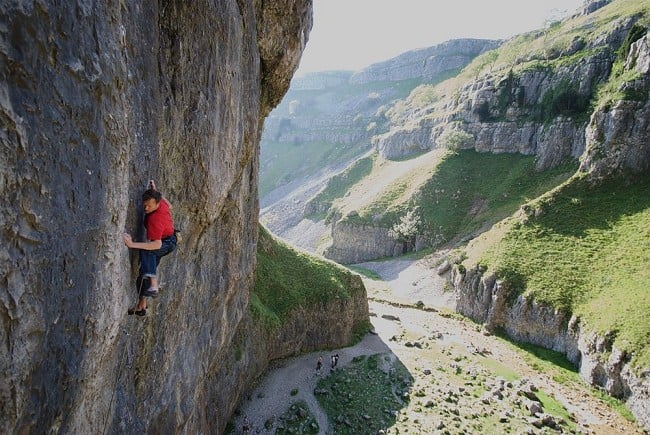
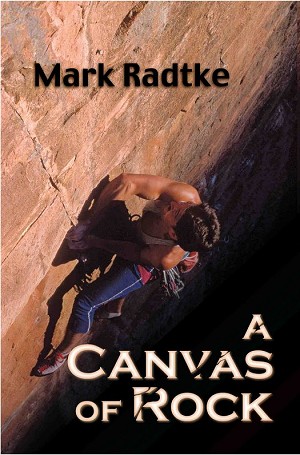
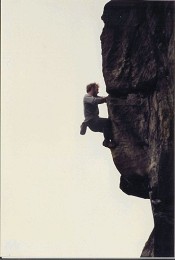








Comments